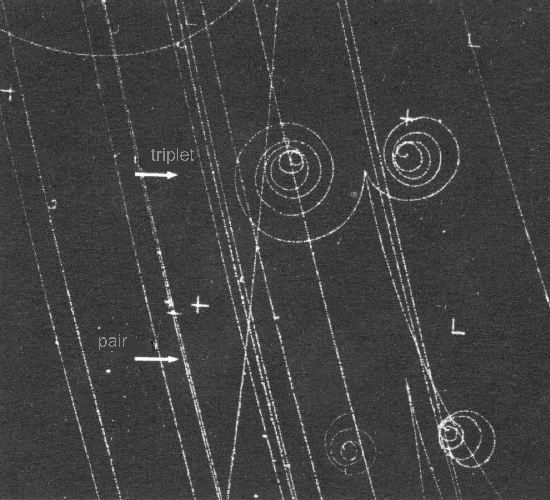Electric Charges
Storyboard
Electromagnetism focuses on the property of particles that we will call electric charge. This can be positive or negative and is usually an integer multiple of a basic charge that corresponds to that of the electron.
ID:(822, 0)
Electrostatic Property
Image
If we rub a comb and then approach it to pieces of paper we will see that the comb attracts these:

This is due to the fact that when rubbing we get loads from the comb to the object with which we rub it, being positively polarized or absorbing loads of the object with which it is rubbed and being negatively charged.
The loading of the comb leads to the paper loads separating, moving away those that are equal and approaching those that are different. This is because
>Same charges are repelled.
Y
>Opposite charges are attract.
When the polarized papers remain and the opposite charges are attracted, the papers are adhered to the comb.
ID:(1903, 0)
Bar in contact with Conductor
Image
If a charged body is approximated to a conductor, the latter is polarized approaching the charges opposite the charged body. Upon contact, the loads are transferred, neutralizing part of the loads of the loaded body and leaving a surplus of loads in the conductor:

ID:(1901, 0)
Bar after separation from the Conductor
Image
If the loaded body separates, the repulsion between equal charges leads to these being distributed over the surface of the conductor body:

ID:(1902, 0)
Loaded Body
Image
When approaching a loaded body to another in which the loads can move (conductor) a polarization originates:

Opposite charges are attracted while those equal to those of the approaching body are repelled.
ID:(1696, 0)
Existence of Charges
Concept
Experimenting with objects we can discover that there is a property that we can call load and that it has the following properties:
• they can be 'created from nothing' to the extent that they are 'created' the same number of positive as negative, which corresponds to a load conservation
• in some media, which we call conductors , these loads can be displaced
• the charges generate forces that can be repellent (equal charges) or attractants (opposite charges)
An additional property is that charges can only take discrete values, the 'unit' value being the charge of the electron.
ID:(10388, 0)
Charges are preserved
Concept
A body can be neutral or polarized by separating positive charges from negative ones. However, this separation is such that the same number of positive charges are created as negative. This is a reflection of:
The sum of the positive and negative charges in the universe is preserved.
This means that the load itself is not preserved. In other words, a positive charge can 'disappear' as long as a negative charge 'disappears'. Similarly, a positive charge can only be 'created' to the extent that at the same time a negative charge is 'created'.
ID:(10389, 0)
Change conservation example
Image
An example of charge conservation occurs when a photon in a gamma ray creates an electron and a positron. The photon has no charge while the electron has a charge of -1.6e-19 Coulomb (negative) and the positron, which is an anti-matter electron, has the same charge -1.6e-19 Coulomb but positive.
The phenomenon can be seen in ancient water vapor chambers used by physicists studying particles:

The particles generate condensation in the saturated water vapor leaving the lines that are observed. Since the camera is in a magnetic field the electrical charges are deflected generating the spring-like images. As they have different signs, one rotates in one direction while the other rotates in the opposite direction.
ID:(11362, 0)
Electrical Load
Equation
The charges are due to the presence of additional electrons or lack thereof. The scale with which loads are measured is the Coulomb. The charge of the
determine the number of loads, with you have to
| $ N_e =\displaystyle\frac{ Q }{ e }$ |
ID:(3211, 0)
0
Video
Video: Electric Charges
